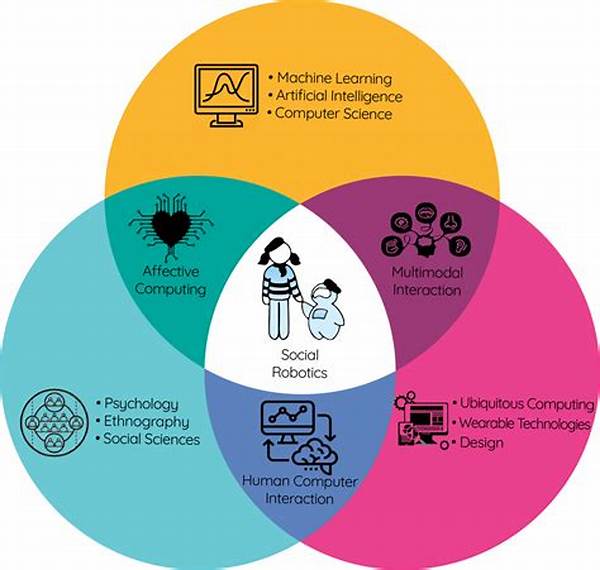Human-Computer Interaction Models
Human-computer interaction (HCI) models are at the heart of modern technology, shaping the way we interact with computers, smartphones, and other digital devices. As these interactions become increasingly seamless and intuitive, it’s easy to forget the complex frameworks and models that underpin them. Let’s embark on a fascinating journey to explore the human-computer interaction models that influence our daily lives.
In today’s fast-paced digital era, the term “human-computer interaction” might sound like something out of a sci-fi movie, but in reality, it’s all around us. Imagine a world where your car’s dashboard could understand your gestures to navigate through traffic, or your fridge could suggest recipes based on its inventory, without pressing a single button. All these futuristic conveniences are outcomes of implementing human-computer interaction models. These models are the blueprints that help developers create engaging and user-friendly interfaces.
For those who believe HCI is merely a modern-day gadget affair, think again. Historically, the interaction between humans and machines began with the typewriter and evolved dramatically with the advent of the personal computer. Then came the GUIs—Graphical User Interfaces—that introduced the use of windows, icons, and menus. Remember the old mouse and keyboard dance? It’s akin to the waltz compared to the freestyle dance of touchscreens, voice commands, and virtual realities today—all made possible through evolving HCI models.
These models don’t just improve usability; they redefine our interactions with machines. By studying user behaviors, ergonomics, and cognitive psychology, HCI professionals develop models that bridge the gap between human needs and computer capabilities. Therefore, these models play a crucial role in making technology more accessible, efficient, and delightful to use.
Exploring Core Human-Computer Interaction Models
Despite the rapid technological advancements, the core principles of human-computer interaction models remain rooted in understanding user needs and behaviors. At the core, these models help designers predict how users will interact with technology. The models act like a reliable GPS for developers, guiding them through the complex labyrinth of user-centric design.
The usability model is one of the most celebrated models in HCI, demanding ease of use, efficiency, and satisfaction. It’s the reason why some apps become indispensable tools while others fade into oblivion. Another influential model is the cognitive engineering model, which emphasizes the mental processes of users. This model ensures that interfaces align with users’ thinking patterns, reducing cognitive load and enhancing overall user experience.
Emotional Design in HCI
Let’s dive deeper into the world of emotional design in human-computer interaction models. Emotional design is where magic meets technology. It’s like the warm hug you didn’t know you needed from your coffee machine, prompting a smile with an inspirational quote while brewing your morning java. These models don’t only focus on functionality but also on creating an emotional connection with the user, which can foster brand loyalty and satisfaction.
We live in an era where people expect technology to adapt to their lifestyles, not the other way around. Emotional design acknowledges this desire, ensuring that products create an emotional resonance with users. By understanding users on a more intimate level, emotionally intelligent interfaces can respond to mood changes, anticipate needs, and ultimately become companions rather than just tools.
The Evolution and Impact of Human-Computer Interaction Models
Human-computer interaction models have come a long way since their inception. Early models were rudimentary, focusing solely on making systems usable. The evolution is nothing short of revolutionary, marked by the transition from command-line interfaces to graphical user interfaces and now to natural user interfaces. This evolution signifies a shift towards interfaces that closely mimic human interactions with the physical world.
As these models become more sophisticated, they play an increasingly central role in shaping technological trends. Consider virtual reality (VR) and augmented reality (AR)—both pivotal developments relying heavily on advanced HCI models to deliver immersive and meaningful experiences. These technologies showcase the potential of HCI models to reinvent how we perceive and interact with our digital environment.
Innovations and Future Trends in Human-Computer Interaction Models
The horizon for human-computer interaction models is glowing with potential innovations. Whether we’re talking about voice-activated devices, biometrics, or gesture recognition, the future promises a deeper convergence of computers and human lives. This signifies an exciting new era where machines will not only understand but anticipate our needs.
So, the next time you enjoy the simplicity of speaking to your virtual assistant to play your favorite track or use a hand gesture to scroll through images, remember the human-computer interaction models that make these experiences possible. It’s not just technology; it’s a carefully crafted symphony of design, psychology, and innovation playing out in your hands.
Five Insightful Tips for Engaging Human-Computer Interaction Models
Delve into cognitive psychology to design interfaces aligned with user expectations.
Prioritize emotional connections to ensure users feel valued and understood.
Implement iterative feedback systems to refine user interactions continually.
Focus on inclusivity, ensuring interfaces are usable by individuals with diverse abilities.
Keep abreast of emerging technologies and incorporate them into designs to enhance user experience.
By weaving these elements into human-computer interaction models, you ensure that your interfaces not only meet user needs but also exceed their expectations, creating memorable and impactful experiences.

